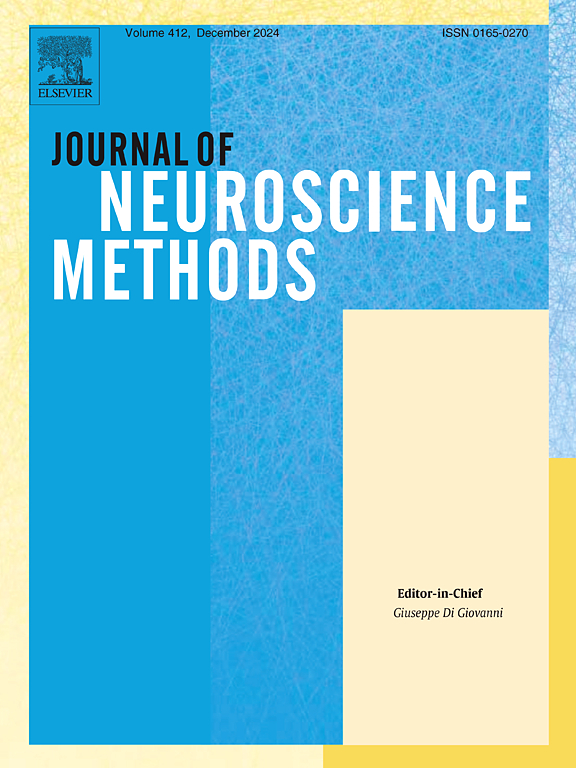整合数据挖掘与经颅聚焦超声优化神经痛治疗策略。
IF 2.3
4区 医学
Q2 BIOCHEMICAL RESEARCH METHODS
引用次数: 0
摘要
背景:神经痛和其他神经性疼痛由于其复杂的病因和各种各样的治疗反应而难以治疗。新的神经调节技术经颅聚焦超声(tFUS)在靶向非侵入性脑刺激中具有有趣的意义。必须更好地了解患者特异性变量和神经过程,以增强tFUS进行个性化治疗。方法:本研究提出了一种基于机器学习的经颅聚焦超声个性化模型(ML-tFUSPM),通过结合tFUS和数据挖掘进行个性化治疗来治疗神经痛。数据挖掘算法可以检查患者人口统计、疼痛因素、成像数据和治疗结果,以揭示反应模式和治疗预测因素。根据这些结果,tFUS可以针对每个患者针对涉及疼痛感知和控制的大脑区域。结果:初步研究表明,数据驱动模型和tFUS增强了治疗效果、副作用和准确性。这项合作努力使用数据分析和神经调节来定制神经痛治疗。新模式强调有针对性的治疗和预测分析,为临床医生提供了基于证据的工具,以更有效和个性化地管理疼痛,这可能会改变整个行业。对比分析:实验结果表明,与其他方法相比,本文方法的准确率高达97%。结论:根据这项研究,计算原理和尖端技术可能导致改变游戏规则的神经病学和疼痛管理的进步。本文章由计算机程序翻译,如有差异,请以英文原文为准。
Integrating data mining with transcranial focused ultrasound to refine neuralgia treatment strategies
Background
Neuralgia and other neuropathic pain are difficult to treat owing to their complicated etiology and a wide variety of responses to treatment. The novel neuromodulation technology transcranial focused ultrasound (tFUS) has intriguing implications in targeted non-invasive brain stimulation. Patient-specific variables and neurological processes must be better understood to enhance tFUS for personalized therapy.
Methods
In this research, a Machine Learning based Transcranial Focused Ultrasound Personalized Model (ML-tFUSPM) has been proposed to treat neuralgia by combining tFUS with data mining for personalized therapy. Data mining algorithms can examine patient demographics, pain factors, imaging data, and therapy outcomes to uncover response patterns and treatment predictors. According to these results, tFUS may be tailored to each patient by targeting brain regions involved in pain perception and control.
Results
Initial studies show that data-driven models and tFUS enhance therapeutic efficacy, side effects, and accuracy. This collaborative endeavor uses data analytics and neuromodulation to customize neuralgia treatment. The new model's emphasis on targeted treatments and predictive analytics gives clinicians evidence-based tools to manage pain more effectively and personally, which might transform the industry.
Comparative analysis
The experimental results show that the proposed method has a high accuracy ratio of 97 % compared to other methods.
Conclusion
According to this study, computational principles and cutting-edge technology may lead to game-changing neurology and pain management advances.
求助全文
通过发布文献求助,成功后即可免费获取论文全文。
去求助
来源期刊

Journal of Neuroscience Methods
医学-神经科学
CiteScore
7.10
自引率
3.30%
发文量
226
审稿时长
52 days
期刊介绍:
The Journal of Neuroscience Methods publishes papers that describe new methods that are specifically for neuroscience research conducted in invertebrates, vertebrates or in man. Major methodological improvements or important refinements of established neuroscience methods are also considered for publication. The Journal''s Scope includes all aspects of contemporary neuroscience research, including anatomical, behavioural, biochemical, cellular, computational, molecular, invasive and non-invasive imaging, optogenetic, and physiological research investigations.
 求助内容:
求助内容: 应助结果提醒方式:
应助结果提醒方式:


